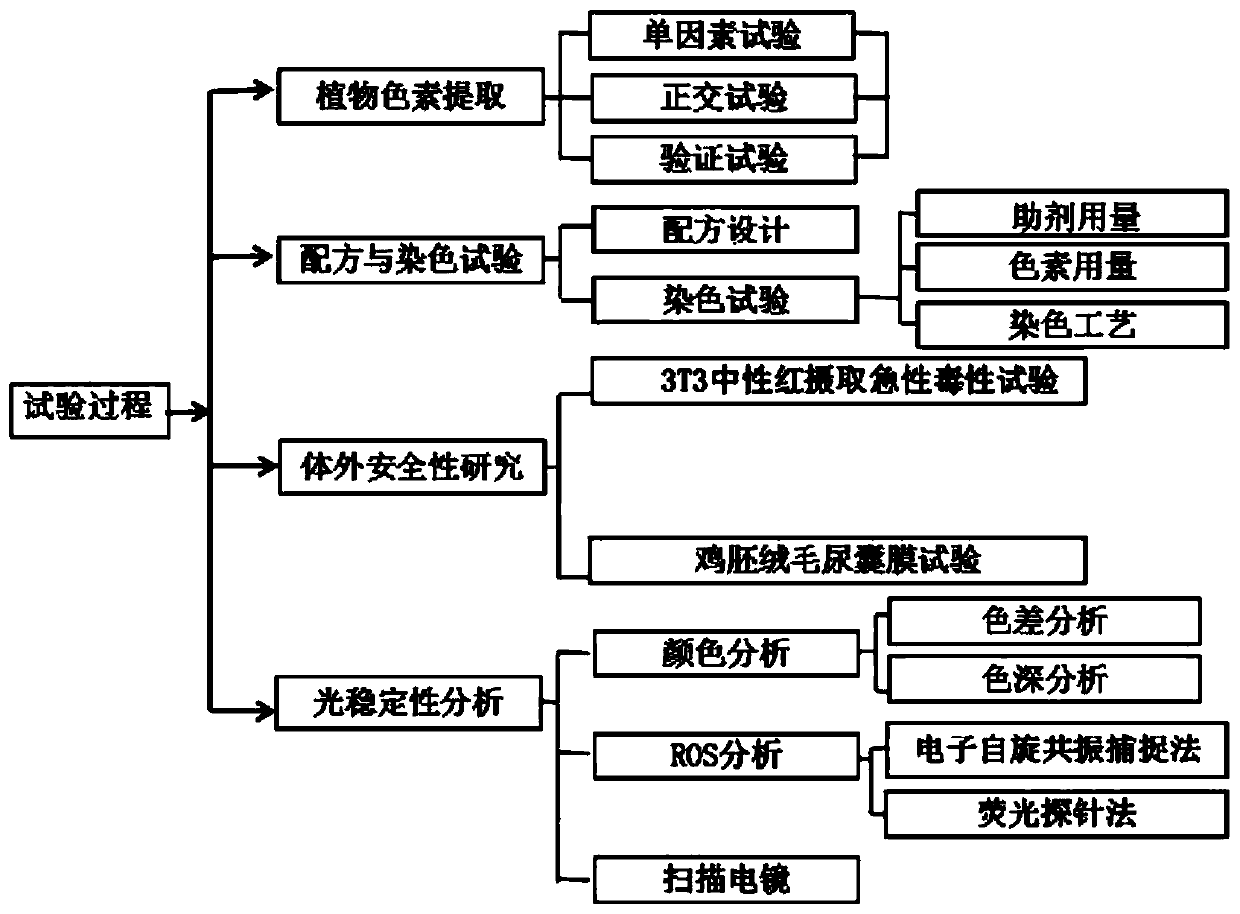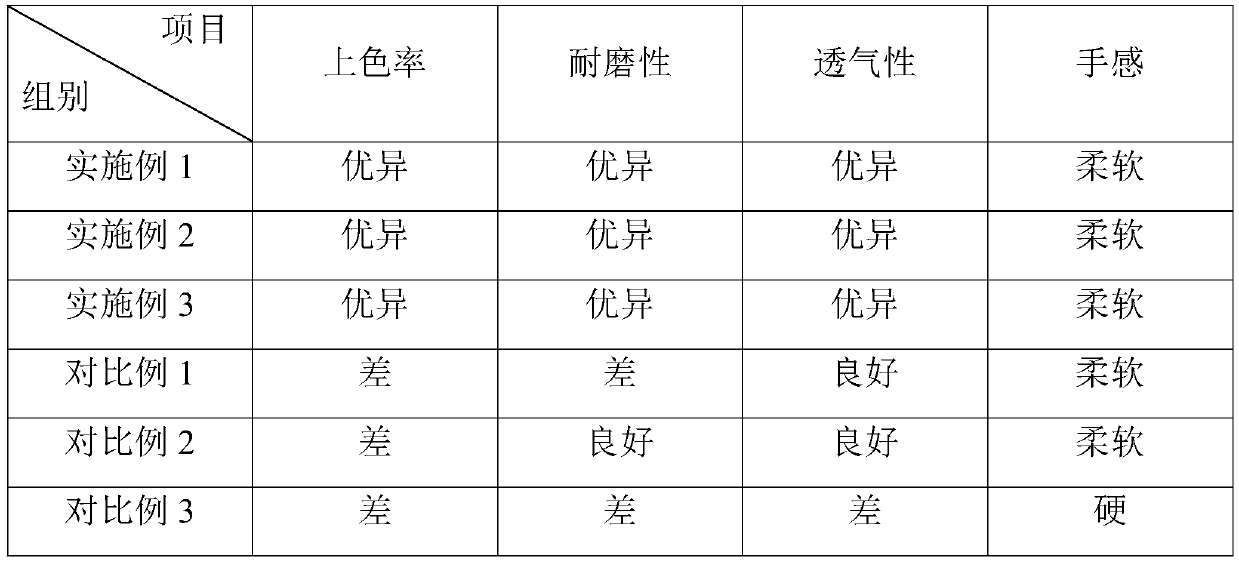Environmentally-friendly textile dye and method for preparing textile fabric by using textile dye
A technology for textile dyes and textile fabrics, which is applied in the field of environmentally friendly textile dyes and the preparation of textile fabrics by using textile dyes, which can solve the problem of being easily affected by external factors, such as ultraviolet rays, pH value, temperature, etc. Problems such as high cost, achieve high-quality coloring effect, enhance adhesion strength and wear resistance, and improve coloring rate
- Summary
- Abstract
- Description
- Claims
- Application Information
AI Technical Summary
Problems solved by technology
Method used
Image
Examples
Embodiment 1
[0023] An environmentally friendly textile dye, the environmentally friendly textile dye contains natural pigments prepared by condensing and refluxing waste dragon fruit peels, and the natural pigments are compounded with acrylic emulsion and auxiliary agents to form environmentally friendly textile dyes that can be applied to textile fabrics , in this embodiment, the auxiliary agent is a dispersion liquid formed by homogeneously dispersing acetic acid and cationic polymer in a homogenizer according to a volume ratio of 1:1, and the concentration of the acetic acid is 1 g / L, so The concentration of the cationic polymer is 1g / L
[0024] Among them, in this embodiment, the method of extracting the natural pigment prepared by condensing and refluxing discarded pitaya peels is as follows: collect and select pitaya peels without mildew and deterioration; wash the pitaya peels and dry them at a temperature of 60°C, crush ; According to the solid-liquid volume ratio of 1:3, add solv...
Embodiment 2
[0028] An environmentally friendly textile dye, the environmentally friendly textile dye contains natural pigments prepared by condensing and refluxing waste dragon fruit peels, and the natural pigments are compounded with acrylic emulsion and auxiliary agents to form environmentally friendly textile dyes that can be applied to textile fabrics , in this embodiment, the auxiliary agent is a dispersion liquid formed by homogeneously dispersing acetic acid and cationic polymer in a homogenizer according to a volume ratio of 10:1, and the concentration of the acetic acid is 5g / L, so The concentration of the cationic polymer is 8g / L
[0029] Among them, in this embodiment, the method of extracting the natural pigment prepared by condensing and refluxing discarded pitaya peels is as follows: collect and select pitaya peels without mildew and deterioration; wash the pitaya peels and dry them at a temperature of 75°C, crush them ; According to the solid-liquid volume ratio of 1:10, ad...
Embodiment 3
[0033] An environmentally friendly textile dye, the environmentally friendly textile dye contains natural pigments prepared by condensing and refluxing waste dragon fruit peels, and the natural pigments are compounded with acrylic emulsion and auxiliary agents to form environmentally friendly textile dyes that can be applied to textile fabrics , in this embodiment, the auxiliary agent is a dispersion liquid formed by homogeneous dispersion of acetic acid and cationic polymer in a homogenizer according to a volume ratio of 5:2, and the concentration of the acetic acid is 3g / L, so The concentration of the cationic polymer is 4g / L
[0034] Among them, in this embodiment, the method of extracting the natural pigment prepared by condensing and refluxing discarded pitaya peels is as follows: collect and select pitaya peels without mildew and deterioration; wash the pitaya peels and dry them at a temperature of 65° C. ; According to the solid-liquid volume ratio of 1:7, add solvent to ...
PUM
| Property | Measurement | Unit |
|---|---|---|
| particle size | aaaaa | aaaaa |
| particle size | aaaaa | aaaaa |
| particle size | aaaaa | aaaaa |
Abstract
Description
Claims
Application Information
 Login to View More
Login to View More - R&D
- Intellectual Property
- Life Sciences
- Materials
- Tech Scout
- Unparalleled Data Quality
- Higher Quality Content
- 60% Fewer Hallucinations
Browse by: Latest US Patents, China's latest patents, Technical Efficacy Thesaurus, Application Domain, Technology Topic, Popular Technical Reports.
© 2025 PatSnap. All rights reserved.Legal|Privacy policy|Modern Slavery Act Transparency Statement|Sitemap|About US| Contact US: help@patsnap.com



